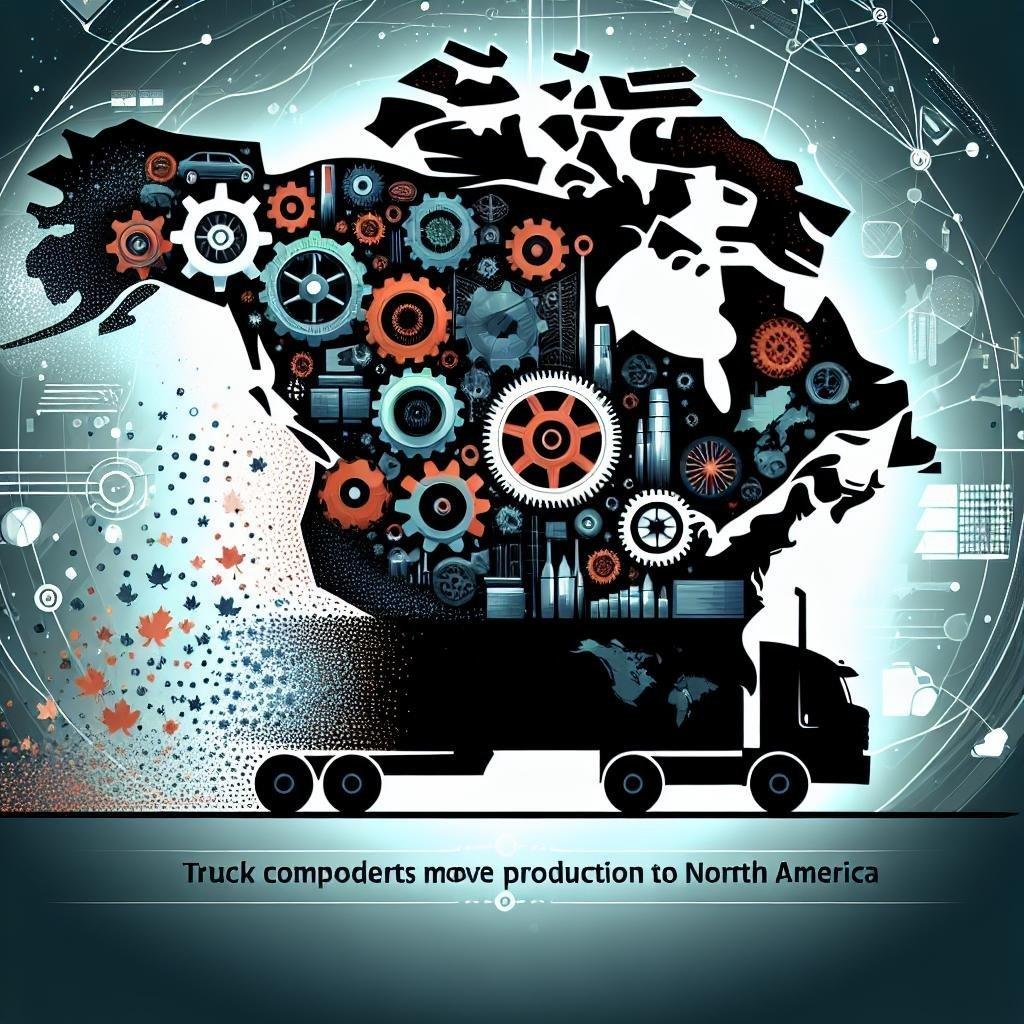
What challenges do suppliers face when relocating manufacturing to North America?
Truck Component Suppliers Look to Shift Production to North America
As global supply chains experience increasing disruption and rising costs, truck component suppliers are reassessing their manufacturing strategies. A growing trend among these suppliers is the strategic decision to move or expand production facilities to North America. Driven by economic, logistical, and political factors, this shift is set to revolutionize the truck parts manufacturing sector.
Why Truck Component Suppliers Are Re-Shoring Production
Suppliers to the North American trucking and commercial vehicle industry are increasingly moving operations closer to OEMs. Let’s explore the driving reasons behind this transition.
1. Supply Chain Resilience
The pandemic exposed significant vulnerabilities in global supply chains. Delays at ports, semiconductor shortages, and factory shutdowns severely impacted truck and automotive manufacturing. By relocating production to Mexico, Canada, or the United States, companies can better manage risks and reduce lead times.
2. Rising International Shipping Costs
Shipping a container from Asia to the U.S. can cost several thousand dollars more than it did pre-pandemic. These high logistics costs eat into profit margins and make offshore manufacturing less attractive.
3. Trade Policy and Tariffs
The evolving political landscape has complicated international trade. The USMCA agreement (which replaced NAFTA) offers more predictable and favorable terms for companies manufacturing within North America.
4. Nearshoring Talent and Technology
North American plants can leverage advanced automation technologies and a skilled workforce. Many suppliers are also investing in training partnerships with technical schools to support long-term growth.
Key Benefits of Shifting Production to North America
Reshoring comes with numerous benefits for truck component makers and OEMs in North America:
- Faster Time-to-Market: Reducing transit time from months to days.
- Improved Quality Control: Local inspection and faster issue resolution.
- Greater Agility: Ability to pivot production quickly based on demand shifts.
- Reduced Inventory Costs: Just-in-time inventory practices become more feasible.
- Eco-Friendly Operations: Significantly lower carbon emissions due to reduced transportation.
Challenges and Considerations
Despite the advantages, reshoring production comes with its own set of hurdles:
- High Labor Costs: Labor is significantly more expensive in the US and Canada than in Asia.
- Initial Investment: Building new production lines or facilities requires substantial capital.
- Workforce Availability: Skilled labor shortages continue to challenge the manufacturing sector.
- Regulatory Compliance: Different states and countries have complex rules and certifications that companies must navigate.
Quick Comparison: Offshore vs. North American Manufacturing
| Factor | Offshore (Asia) | North America (US/Mexico/Canada) |
|---|---|---|
| Lead Time | 4–12 weeks | 2–7 days |
| Shipping Cost | High (volatile) | Low (predictable) |
| Supply Chain Risk | High | Low |
| Tariff Exposure | High (subject to global trade disputes) | Low (under USMCA) |
| Labor Cost | Low | Moderate to High |
Case Study: Magna International’s Expansion in North America
Magna International, a Tier 1 supplier to many truck and big rig manufacturers, has increasingly invested in North American facilities. In 2023, the company announced a $500 million investment to expand manufacturing plants in Michigan and Mexico. This move is expected to add thousands of jobs and ensure supply chain stability for North American truck OEMs.
Interestingly, Magna noted that reshoring helped them reduce total supply chain costs by 12% in the first six months after relocating part of their production from China to Mexico.
Tips for Truck Component Suppliers Planning to Reshore
If you’re a supplier considering production relocation, here are key tips to ensure a smooth transition:
- Perform a Comprehensive Cost Analysis: Factor in more than just labor—consider transportation, quality, downtime.
- Work with Local Governments: Many U.S. states offer incentives or grants to manufacturers opening or expanding facilities.
- Invest in Automation: Offset higher labor costs through robotics and AI-driven scheduling systems.
- Train or Retrain Your Workforce: Partner with local technical schools or apprenticeship programs.
- Collaborate with OEMs: Early alignment with customers ensures forecasting and capacity planning stay on track.
The Bigger Picture: A Fundamental Shift in Manufacturing Strategy
This movement signals a broader transformation in the global manufacturing strategy across industries—not just in trucking. The trend of bringing parts of the supply chain closer to end markets, often referred to as nearshoring or reshoring, demonstrates how companies are rethinking globalization in the post-pandemic era.
Truck component suppliers who act early may gain a long-term strategic edge, accessing domestic customers more efficiently and navigating risks with greater agility.
Conclusion
As operational challenges and global uncertainties rise, the shift towards North American truck part production is gaining traction. By reshoring or nearshoring critical manufacturing processes, truck component suppliers can cut costs, enhance efficiency, and build more resilient supply chains. Though the road ahead presents challenges, the benefits make this move not just practical—but imperative for long-term success.
Whether you’re a small supplier or a multinational Tier 1 manufacturer, now is the time to assess your strategy. The future of truck manufacturing is being built closer to home—right here in North America.
